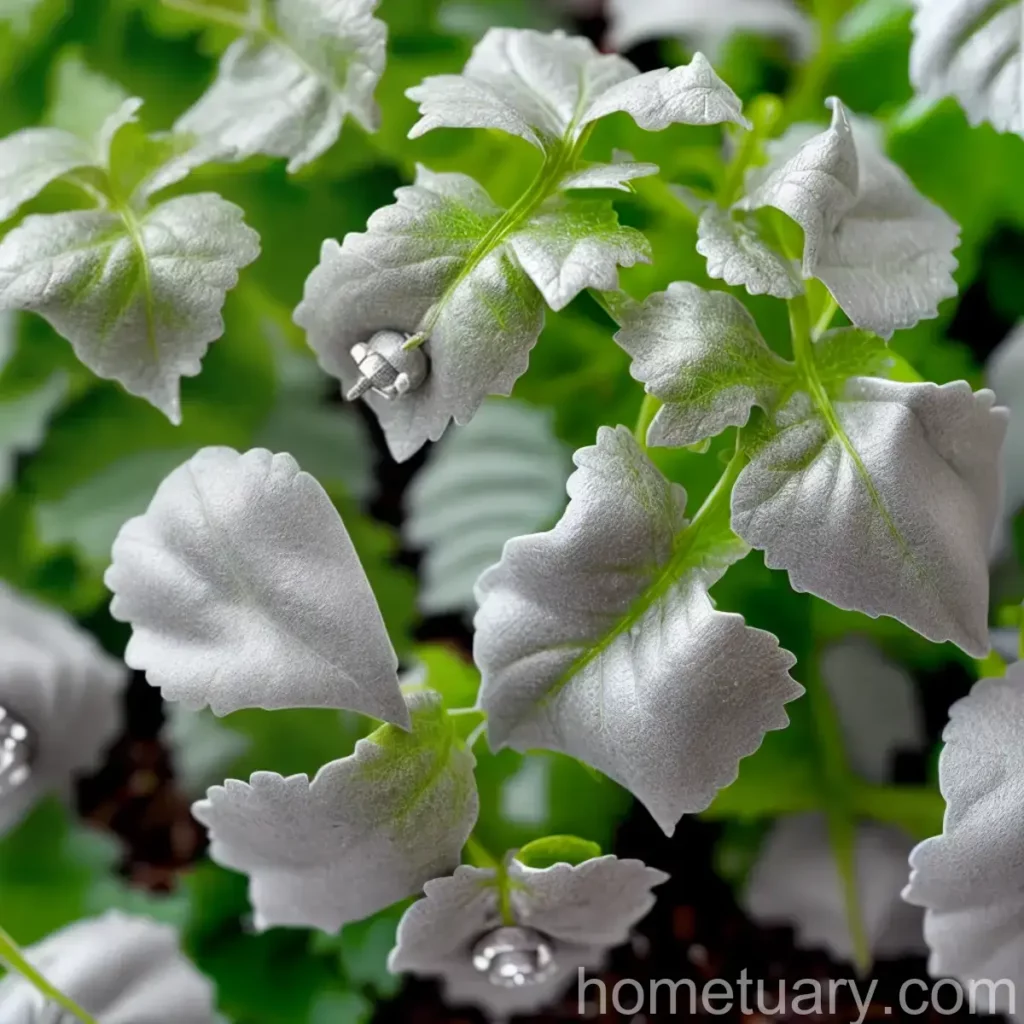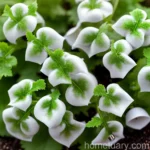Plant Scientist’s Guide to foamy bells (x Heucherella ‘Silver Streak’)
As a plant scientist, it’s always fascinating to explore the diverse world of plants and their unique characteristics and requirements. In this guide, we will delve into the world of foamy bells (x Heucherella ‘Silver Streak’). From its growth habits to its propagation methods and landscape uses, we will cover various aspects of this intriguing plant.
What is foamy bells (x Heucherella ‘Silver Streak’)?
Foamy bells, scientifically known as Heucherella ‘Silver Streak’, are ornamental perennial plants that are valued for their attractive foliage and delicate flowers. This hybrid plant is a cross between Heuchera and Tiarella, combining the best traits of both species to create a visually stunning and versatile garden addition.
Key Takeaways – foamy bells (x Heucherella ‘Silver Streak’)
Before we delve into the specific care and cultivation practices for foamy bells, let’s take a moment to highlight the key takeaways about this unique plant.
- Heucherella ‘Silver Streak’: A hybrid plant that combines Heuchera and Tiarella, known for its striking foliage and delicate flowers.
- Characteristics: Variegated foliage with hints of silver, green, and purple, making it an attractive addition to any garden or landscape.
- Growth Habits: Compact and mounding, making it suitable for ground cover and container gardening.
- Water Requirements: Moderate watering needs, preferring slightly moist but well-drained soil.
- Sunlight: Thrives in partial to full shade, with some varieties exhibiting tolerance to sunnier conditions.
- Soil Preferences: Well-drained, humus-rich soil with a slightly acidic to neutral pH.
- Common Pests: Susceptible to certain pests, including vine weevils and slugs.
- Disease Resistance: Exhibits good resistance to common foliage diseases when provided with proper care.
Now, let’s explore each of these aspects in detail to gain a comprehensive understanding of how to care for and appreciate foamy bells in various garden settings.
Culture
Cultivating foamy bells (x Heucherella ‘Silver Streak’) involves understanding and addressing its specific cultural requirements. From the soil it thrives in to its preferred pruning techniques, paying attention to these cultural aspects can lead to healthier and more vibrant plants.
Uses
Foamy bells are prized for their versatility in garden and landscape settings. Whether used as ground cover, in mixed borders, or as container plants, their attractive foliage and adaptability make them an ideal choice for various applications.
Garden Uses
- Ground Cover: The compact growth habits and vibrant foliage make foamy bells an excellent choice for ground cover, filling in spaces with a visually appealing carpet of leaves.
- Mixed Borders: Adds texture and color variation when planted alongside other perennials and shrubs, creating a dynamic and visually appealing garden landscape.
Container Gardening
Foamy bells are well-suited for container gardening due to their compact growth habits and striking foliage. They add an element of visual interest and can thrive in a controlled environment.
Water
Understanding the water requirements of foamy bells is crucial for maintaining healthy plants. While they are not overly demanding, providing adequate moisture is essential for their well-being.
Water Requirements
- Moderate Moisture: Foamy bells prefer slightly moist soil, but they should not be waterlogged. Consistent watering, especially during hot and dry periods, is essential for their health.
Sunlight
Sunlight plays a critical role in the growth and development of foamy bells. Understanding their sunlight preferences is essential for providing an optimal growing environment.
Sunlight Preferences
- Partial to Full Shade: Foamy bells thrive in partial to full shade, making them ideal for shaded garden areas and under the canopy of larger trees.
- Adaptability to Sunnier Conditions: Some varieties exhibit tolerance to sunnier conditions, especially if the soil remains consistently moist and cool.
Fertilizer
Fertilizing foamy bells is an important aspect of their care regimen, ensuring that they receive the essential nutrients for healthy growth and vibrant foliage.
Fertilization Guidelines
- Balanced Fertilizer: Use a balanced, slow-release fertilizer in spring to provide nutrients for the growing season.
- Avoid Excessive Nitrogen: Limiting excessive nitrogen exposure helps maintain the vibrant colors of the foliage without encouraging excessive leaf growth.
Soil
The soil composition and pH level play a crucial role in the overall health and vitality of foamy bells. Understanding their soil preferences is essential for providing an ideal growing environment.
Soil Preferences
- Well-Drained Soil: Foamy bells thrive in well-drained soil that prevents waterlogging and potential root rot.
- Humus-Rich Composition: Incorporating organic matter into the soil helps maintain adequate moisture levels and provides essential nutrients for healthy growth.
- Acidic to Neutral pH: The ideal pH range for foamy bells is slightly acidic to neutral, typically between 5.5 and 7.0.
Pruning
Pruning foamy bells is essential for maintaining their compact growth habits and promoting overall plant health. Knowing the proper pruning techniques is crucial for achieving the desired results.
Pruning Techniques
- Spring Pruning: Remove any dead or damaged foliage in early spring to encourage new growth and maintain the plant’s appearance.
- Division: Periodically dividing mature clumps helps rejuvenate the plants and control their spread, especially if they become overcrowded.
Propagation
Understanding propagation methods for foamy bells enables gardeners to expand their plant collection and share the beauty of these hybrids with others. Several techniques can be used to propagate foamy bells successfully.
Propagation Methods
- Division: Dividing mature clumps in early spring or early fall is an effective way to propagate foamy bells. Carefully separate the root mass and replant the divided sections in suitable locations.
- Stem Cuttings: Taking stem cuttings from healthy plants and rooting them in a suitable growing medium can yield new plants with identical characteristics.
- Seed Propagation: While less commonly used, foamy bells can be grown from seeds, but the resulting plants may exhibit some variation in traits.
Container Popularity
The compact growth habits and visually appealing foliage of foamy bells make them popular choices for container gardening. Their adaptability to confined spaces and vibrant colors make them stand out in various container arrangements.
Container Gardening Tips
- Suitable Containers: Choose well-draining containers that allow excess moisture to escape, preventing waterlogging.
- Growing Medium: Use a high-quality potting mix that provides adequate nutrients and promotes root health.
- Watering: Monitor the moisture levels in the container and water the plants as needed, ensuring that the soil does not dry out completely.
- Fertilization: Apply a balanced, slow-release fertilizer to container-grown foamy bells to support their growth throughout the growing season.
Common Diseases
While foamy bells are relatively resistant to many common plant diseases, they can still be affected by certain issues that impact their overall health and appearance. Being able to identify and address these diseases is crucial for maintaining healthy plants.
Disease Resistance
- Powdery Mildew: Some varieties of foamy bells may be susceptible to powdery mildew, especially in humid conditions. Adequate air circulation and proper watering practices can help prevent this issue.
- Leaf Spot: Proper sanitation and avoiding overhead watering can reduce the risk of leaf spot diseases, maintaining the foliage’s appearance and health.
Disease Diagnosis
Diagnosing potential diseases affecting foamy bells involves observing any unusual changes in foliage color, texture, or overall plant health. Prompt action is essential for addressing these issues and preventing their spread.
Common Disease Symptoms
- Foliage Discoloration: Yellowing, browning, or unusual patterns on the leaves can indicate the presence of fungal or bacterial diseases.
- Wilting or Drooping: Sudden wilting or drooping of foliage, especially accompanied by discoloration, can be a sign of disease or root issues.
- Stunted Growth: If the plants exhibit stunted growth or an overall decline in vigor, it may be indicative of underlying health issues.
Common Pests
Various pests can pose a threat to the health and appearance of foamy bells. Understanding these common pests and implementing appropriate control measures is essential for protecting the plants.
Common Pests
- Vine Weevils: These pests can target the roots of foamy bells, leading to weakened plants and potential decline.
- Slugs and Snails: These common garden pests can feed on the foliage of foamy bells, causing visible damage and diminishing the plants’ visual appeal.
- Aphids: Aphid infestations can affect the new growth of foamy bells, leading to distorted foliage and potential stress on the plants.
Pest Management
- Cultural Practices: Maintaining a clean and tidy garden environment can reduce the attractiveness of foamy bells to certain pests and minimize their impact.
- Natural Predators: Encouraging natural predators, such as ladybugs and lacewings, can help control aphid populations and mitigate their impact on the plants.
- Organic Controls: When pest populations require intervention, consider using organic pest control methods to minimize the impact on beneficial organisms and the overall ecosystem.
Botanist’s Tips
As a plant scientist, I’ve gathered some valuable tips and insights for cultivating foamy bells and maximizing their visual appeal in garden settings. These botanist’s tips encompass various aspects of care and cultivation, providing a well-rounded approach to growing these fascinating hybrids.
Botanist’s Tips for foamy bells (x Heucherella ‘Silver Streak’)
- Proper Spacing: When planting foamy bells, allow adequate spacing between individual plants to promote air circulation and prevent overcrowding, which can lead to increased disease risk.
- Mulching: Applying a layer of organic mulch around foamy bells can help maintain soil moisture levels, regulate soil temperature, and suppress weed growth, contributing to overall plant health.
- Observation and Monitoring: Regularly inspecting foamy bells for signs of pests, diseases, or nutrient deficiencies allows for timely intervention and proactive management.
Fun Facts
Uncover some interesting and lesser-known facts about foamy bells (x Heucherella ‘Silver Streak’) that highlight their unique qualities and contributions to garden landscapes.
Fascinating facts about foamy bells
- Hybrid Origin: Foamy bells are a hybrid of Heuchera and Tiarella, combining the best traits of both species to create an attractive and adaptable garden plant.
- Variegated Foliage: The variegated foliage of foamy bells exhibits a captivating blend of silver, green, and purple hues, adding depth and visual interest to garden compositions.
- Pollinator Attraction: The delicate flowers of foamy bells attract pollinators such as bees and butterflies, contributing to the overall biodiversity of the garden environment.
Now that we have explored the various aspects of foamy bells, it’s important to provide access to external resources for further learning and inspiration.
Links to External Resources
Find below a curated selection of links to external resources that offer valuable information on foamy bells (x Heucherella ‘Silver Streak’), including plant care guides, growing tips, and stunning garden design ideas.
- The Royal Horticultural Society – Heucherella ‘Silver Streak’
- University of Maryland Extension – Foamy Bells Plant Guide
- The Spruce – How to Grow and Care for Heucherella Plants
- Missouri Botanical Garden – Heucherella Information
- Gardening Know How – Growing Heucherella Plants
By exploring these resources, gardeners and plant enthusiasts can deepen their knowledge of foamy bells and discover new perspectives on incorporating these hybrids into their garden designs and landscapes.
In conclusion, foamy bells (x Heucherella ‘Silver Streak’) stand as a captivating and versatile addition to any garden or landscape. Their striking foliage, adaptability to various growing conditions, and unique growth habits make them a valuable asset for enhancing the visual appeal and biodiversity of outdoor spaces.
As a plant scientist, I encourage fellow enthusiasts to explore the world of foamy bells, experiment with different combinations and planting arrangements, and appreciate the beauty and resilience of these remarkable hybrid plants.
Now that we have covered various aspects of foamy bells, including their cultural preferences, diseases, pests, propagation methods, and more, readers can gain a comprehensive understanding of how to care for and appreciate these fascinating plants. Whether you’re a seasoned gardener or an aspiring plant enthusiast, this guide serves as a valuable resource for cultivating and enjoying foamy bells in diverse garden settings.















